How to bag grape planting? Efficient bagging technology for grape planting
Grape is one of the oldest fruit trees in the world and is widely planted all over the world. In recent years, with the rise of the wine market, the planting area of grapes is also expanding, which also puts forward strict requirements for grape quality. In the process of grape planting, bagging is a very important link in order to produce pollution-free green fruit, which can reduce the harm of diseases and insect pests during fruit growth, reduce sunburn and bird damage, reduce the pollution of pesticides and dust, and improve economic benefits. So, how to bag grape planting? The efficient bagging technology of grape planting is introduced as follows.
First, choose the right paper bag
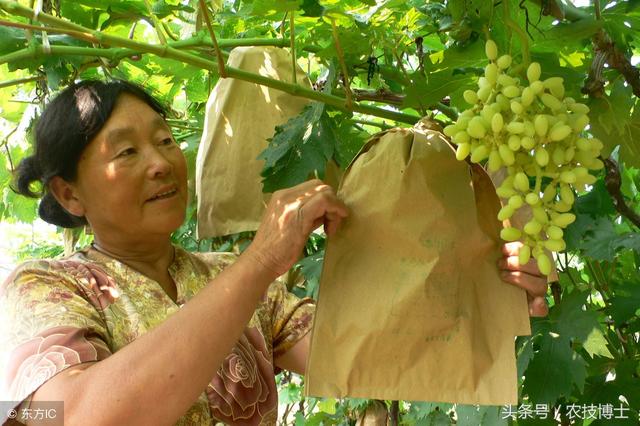
In production, many fruit growers choose ordinary fruit bags made of flower paper and newspapers in order to save expenses, which have poor hydrophobicity, poor tensile strength and high damage rate; because the paper is not disinfected and sterilized, dominant bacteria and insect species are easy to be formed in the bag, thus aggravating the occurrence of fruit diseases; the appearance quality of fruits with these paper bags is not improved obviously, and some will cause pollution and affect the appearance quality. The selection of fruit bags should be based on the effects of microenvironment on the appearance and internal quality of fruits, and the paper bags with strong wind and rain resistance, good air permeability, high light transmittance, high hydrophobicity and anti-bacteria should be selected according to the varieties. For example, green and white varieties emphasize anti-bacteria and smooth fruit surface, and the requirements of chromatography are not so strict, while colored varieties have certain requirements for the selection of fruit bag transmittance and chromatography. In addition, the fruit bag should be selected according to the ear shape and size of the variety.
Second, do a good job in the management before bagging
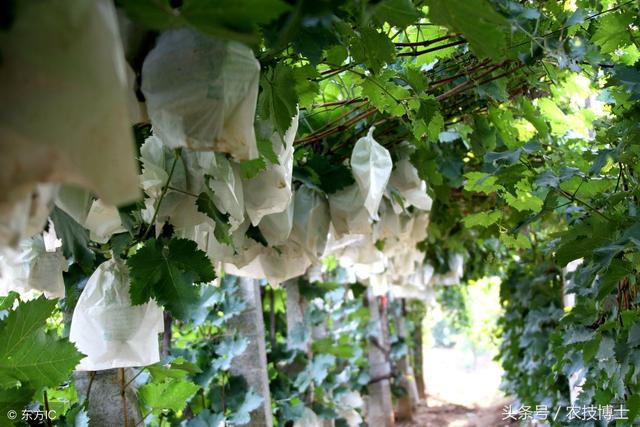
1. Fertilization on the ground: before sprouting, mainly available nitrogen, generally applying 30 kg urea per mu; pre-anthesis topdressing with appropriate phosphate fertilizer, 30 kg per mu of diammonium phosphate; 45% compound fertilizer and 0.25 kg per plant 10 days after anthesis. In addition to some conventional fertilization, bagged plants must also apply calcium fertilizer. In addition to applying calcium fertilizer when applying basic fertilizer, ammonia calcium and amino acid calcium 800 / 1000 times should be sprayed three or four times before bagging.
two。 Timely irrigation: the orchard must be watered once before bagging, and bagging can begin after the ground is dry, which can significantly reduce or even avoid sunburn after bagging. It is best to implement micro-irrigation in orchards with conditions, which can not only alleviate the contradiction of water shortage, but also provide uniform water supply and maintain the good structure of the soil.
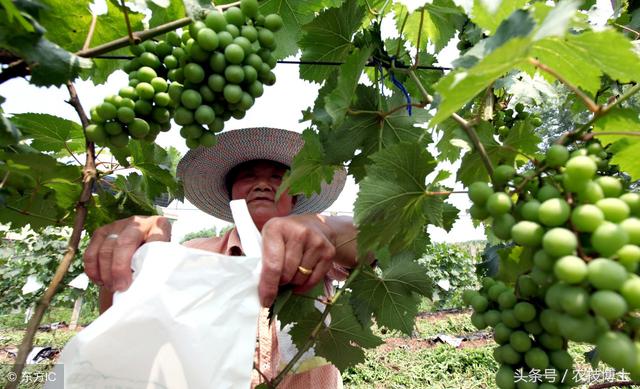
3. Sterilization before bagging: before bagging, a fungicide should be sprayed once according to the local disease situation and medication experience, and the whole tree should be carefully sprayed with 70% methyl topiramate 800 times plus 40% stable bacteria 800 times. After the solution is dry, the whole tree can be bagged. If rain occurs during bagging, a fungicide should be sprayed after the rain. Pay attention to the selection of water-soluble fungicides, do not choose emulsion, otherwise the fruit surface is easy to leave spots.
4. Control output: the yield of "Red Earth", "Beauty Index", "Ruby Seedless" and other varieties that have entered the high yield period should be controlled at 1000mur1500 kg / mu in the Central Plains. The yield of "Jufeng" series and European and American hybrid varieties can be slightly higher, but generally no more than 1800 kg / mu.
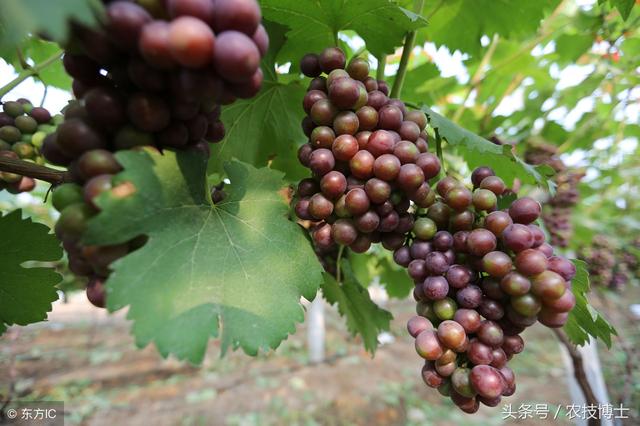
5. Whole ear and fruit thinning: in order to improve the grape quality, stabilize the tree potential, adjust the load reasonably, and make the ear appearance neat and beautiful. The remaining ear should be selected according to the tree potential, variety, management level, ear type size and yield requirements. Remove too many ears before flowering, leave no fruit on thin and weak branches, and leave one ear on moderate or strong fruiting branches. The total amount of ears left will be 10% more than the expected yield. The ears left behind should be arranged before flowering to ensure that the spikes are neat in shape, reasonable in distribution and beautiful in appearance. According to the order from top to bottom, each ear removes one branch every two branches, and each ear leaves 10 Mel 15 branches. The ear should be arranged before bagging, and the small grains, diseased grains, deformed grains and inward and outward protruding grains should be removed. The ears of strong trees with reasonable structure should be selected and bagged after thinning the whole ear, which is conducive to the production of high-quality fruit.
Third, timely bagging
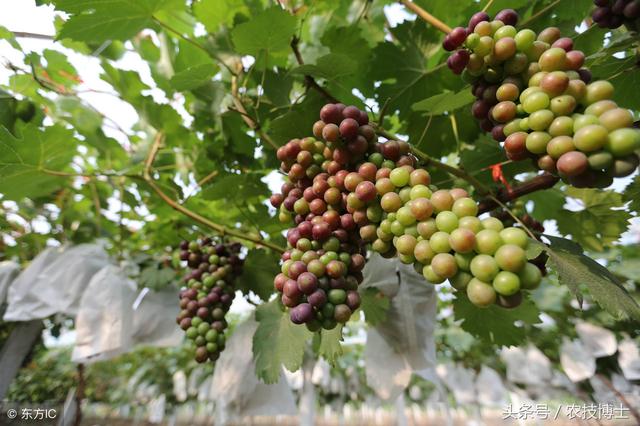
The time of bagging sooner or later also directly affects the effect of bagging. Early bagging is not conducive to fruit thinning, and late bagging will infect the ear. The best time for bagging in the Central Plains is about 15 days after falling flowers, or when the fruit grows to the size of soybeans. If bagging is too late, the ear is easy to infect pathogens after mid-June, especially white rot, anthrax, acid rot, gray mold and so on. Do not bag immediately after a sudden sunny day after continuous rain, as it will aggravate the sunburn. After a day or two, the fruit is slightly adapted to the high temperature and then bagged. Bagging time is preferably before 10:00 or after 4 p.m., to reduce sunburn. If dipped in fungicides or fruit stretching agents, the ears that have been soaked on the same day will be covered on the same day. The Central Plains should be finished by June 10.

The correct bagging method is to open the mouth of the bag with the right hand to make the whole bag bulge, hold the bottom of the bag with the left hand, open the ventilated drains on both sides of the bottom of the bag, expand the bag, pull the bag up from the bottom, and place the stalk in the cut at the top of the bag so that the ear is in the center of the bag. Then tie the mouth of the bag with wire to avoid the inflow of Rain Water. Be careful not to grasp the ear or grain with your hand, so that the ear is naturally in the middle of the bag. after bagging, gently put the bag under the leaf and cover it with the leaf to prevent sunburn. It is also worth noting that if the bagged fruit is not shaded by leaves, a paper hat should be added to the west or south ear of the vine to reduce sunburn. If you encounter high temperature (higher than 38 ℃) after bagging, you should open the bottom of the bag for ventilation to reduce the temperature in the bag. The bagging operation should be completed within 10 days.
IV. Management after bagging
1. Do a good job in summer shears: tie vines and pick hearts in time during the growing season. Improve ventilation and light transmission conditions to prevent strong winds from breaking new tips. Ten leaves were left above the inflorescence of each fruiting branch, and the accessory shoot on the fruiting branch was completely erased below the ear, and one or two leaves were left above the ear to pick the heart repeatedly, leaving a secondary shoot at the top of the branch to prolong the growth, leaving five leaves to pick the heart repeatedly. Generally speaking, 10 leaves are left for the developing branch and one or two leaves for the accessory shoot. Leave a secondary shoot at the top of the developing branch to prolong the growth of the five leaves and pick the heart repeatedly.
two。 Pest control: after bagging, focus on the control of new shoots and leaves of diseases and insect pests, pay special attention to the prevention and control of black pox, downy mildew, white rot, anthrax. Within 5 days after bagging, 80% essential 400 times plus 40% stable bacteria 700 times plus 0.5 potassium dihydrogen phosphate spray to prevent the occurrence of diseases and insect pests. Always check the fruit bag for damage or shedding, if any, replace or re-fasten it in time. To prevent and cure downy mildew, spray in advance. You can choose 1-0. 5-0. 5-fold Bordeaux solution or 1-0. 5-fold Bordeaux spray every 10 days, and spray 3-Mel 5 times in the growing season.
If you find downy mildew harm, you can choose 90% aluminum ethyl phosphate wettable powder 500 times liquid spray, and then use 25% Ruidu 600 times liquid spray. Note that the same drug can be used twice in a row, preferably not more than three times, otherwise it will produce drug resistance. July-September is the peak period of the disease, with 50% olephthalein wettable powder (trade name Cork, Chisenshuwei) 1 bag of water 15 kg spray, 3 hours after the white bacteria blackened, 8 hours later the plaque healed. When the grape is nearly ripe, it will attract insects because of its sweetness, especially the insects that harm the grape grains, such as wasps and beetles. Control method: hang on the grape rack with jar or discarded bucket solution to trap and kill adults, generally use brown sugar, honey, water (proportion is 1:1:5) and a small amount of trichlorfon mixed solution as attractant. Broad-spectrum fungicides can be used when there are many insects and large area.
5. Bag removal and subsequent management
There is no need to remove the bags for cyan grapes. Red, purplish black and black varieties should be bagged 15 days before harvest. For the ears with good paper bag quality, strong light transmittance and good coloring of berries in the bag, the bag can be removed during harvest. In order to prevent the harm of birds, insects and air pollution, instead of removing the fruit bag at one time, open the bottom and prop it up in the shape of an umbrella. To be harvested, and then all removed, or with bags for sale. The main purpose is to color the berries after removing the bag and before harvest. After removing the bag, remove the old leaves, diseased leaves and residual leaves around the ear, cut off the redundant branches and auxiliary shoots, remove the leaves within 20 cm around the ear, take the lower part of the shelf with sieve-like light as standard, and leave some of them to shade the ear to prevent sunburn. At the same time, turn the ear in time to ensure the light, so that the ear can be colored quickly.
[conclusion] to do a good job of bagging grape planting plays an important role in improving the yield and benefit of grape planting. The efficient bagging technology of grape planting is introduced above, and I hope it can help you!
- Prev
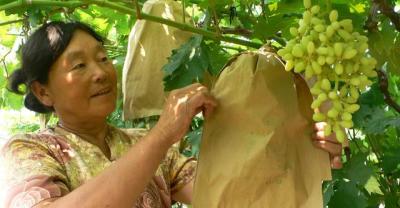
The planting area of sugar tangerine in Guangxi has exceeded 6 million mu. Can farmers still make money from planting sugar orange?
Sugar tangerine has always been a popular fruit, especially during the Spring Festival, it is a good product for gifts. It is not only delicious, but also beautiful. All the time during the Spring Festival.
- Next
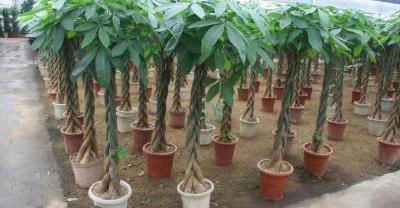
Directly hit the implant surgery site, the miraculous implant really painless?
Like tooth extraction, the use of local anesthesia, less trauma, postoperative food can be eaten, almost painless. I believe that friends who want to know about dental implants have long been used to hearing this kind of saying.
Related
- Fuxing push coffee new agricultural production and marketing class: lack of small-scale processing plants
- Jujube rice field leisure farm deep ploughing Yilan for five years to create a space for organic food and play
- Nongyu Farm-A trial of organic papaya for brave women with advanced technology
- Four points for attention in the prevention and control of diseases and insect pests of edible fungi
- How to add nutrient solution to Edible Fungi
- Is there any good way to control edible fungus mites?
- Open Inoculation Technology of Edible Fungi
- Is there any clever way to use fertilizer for edible fungus in winter?
- What agents are used to kill the pathogens of edible fungi in the mushroom shed?
- Rapid drying of Edible Fungi

